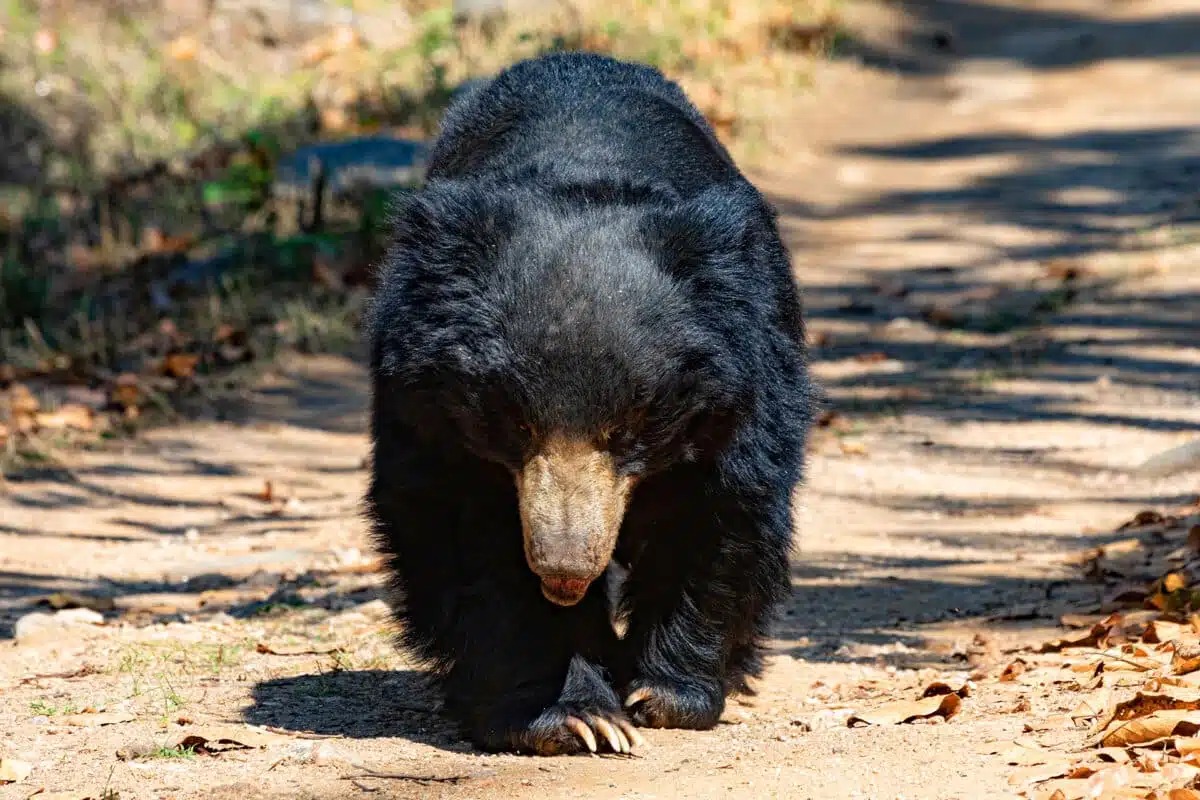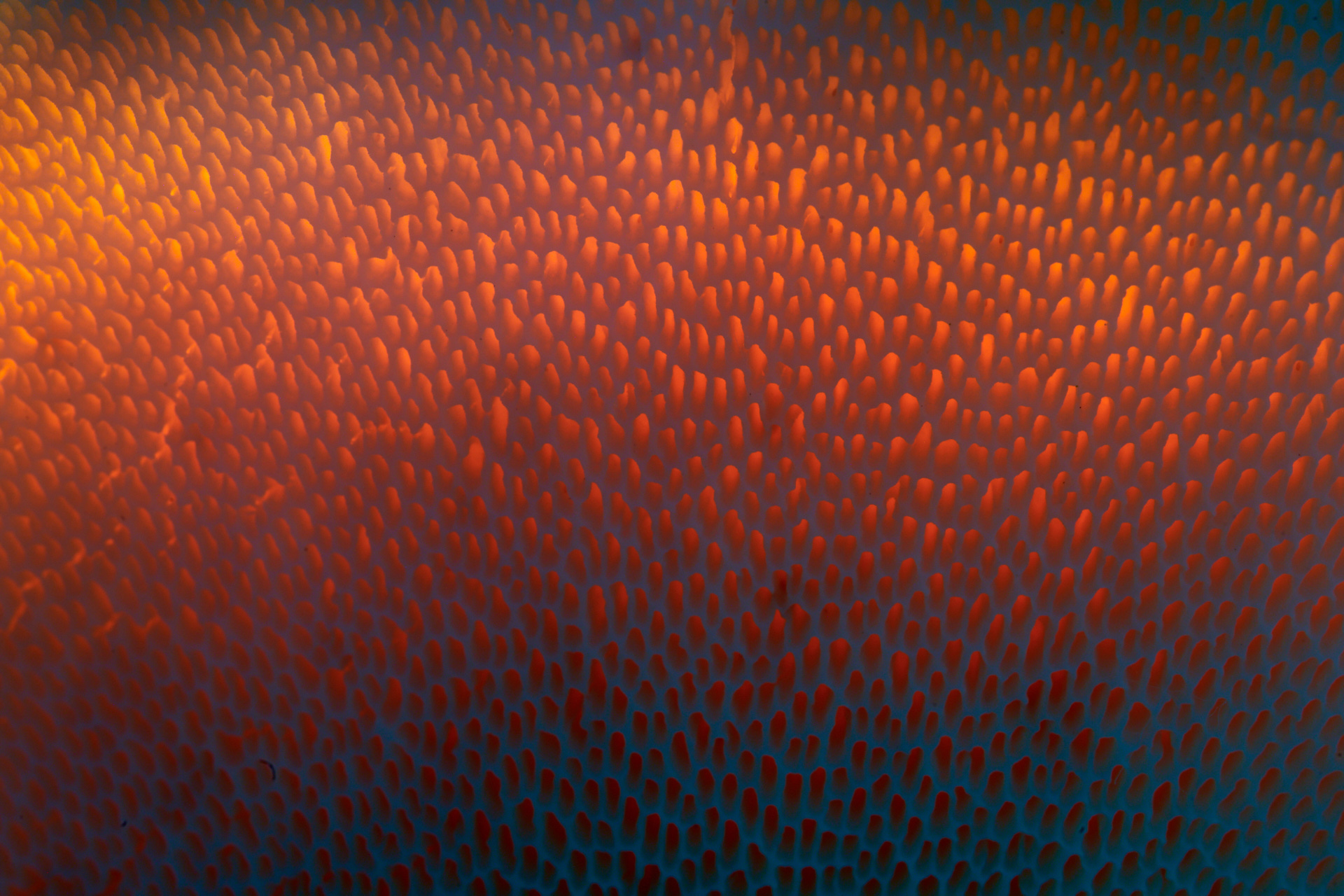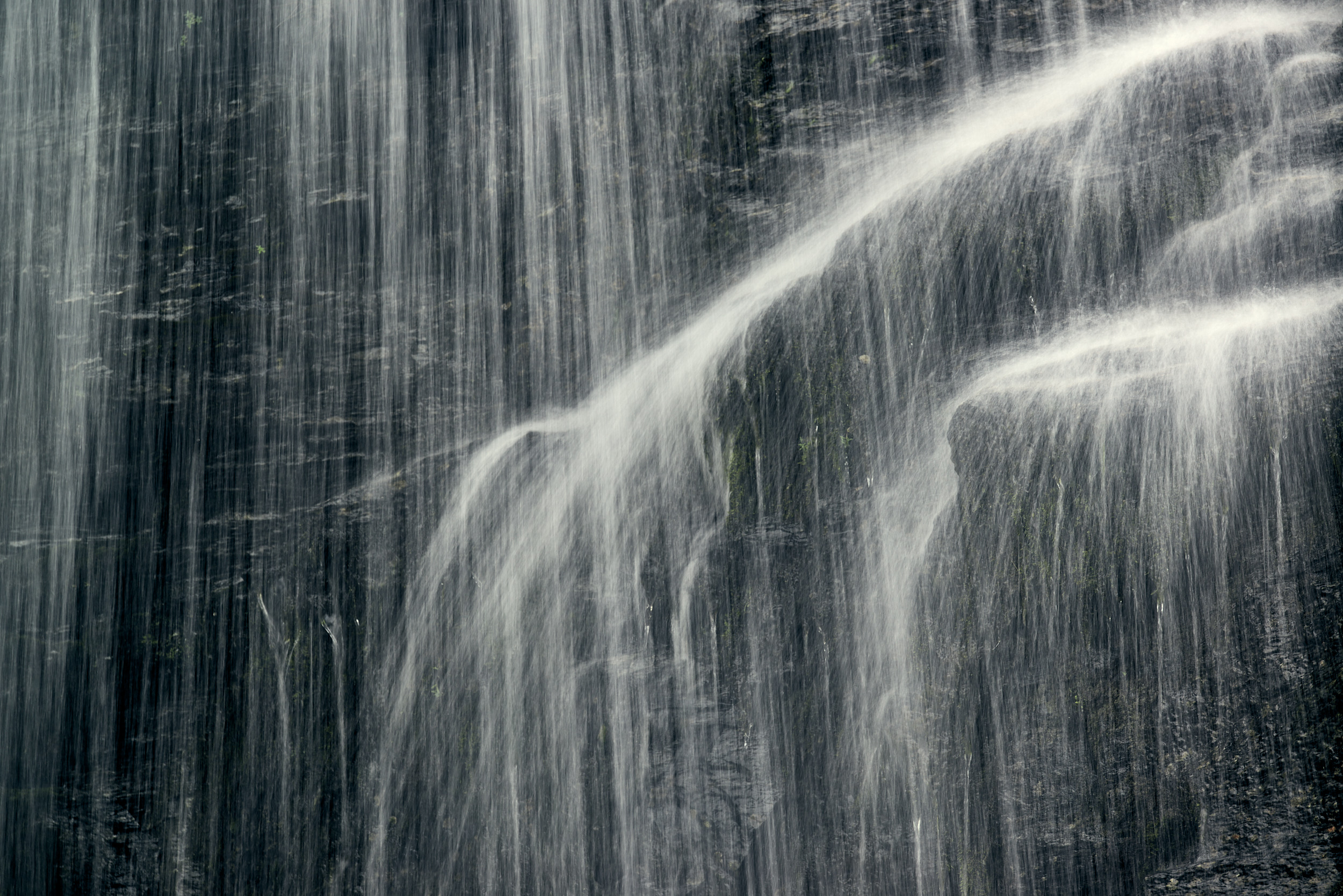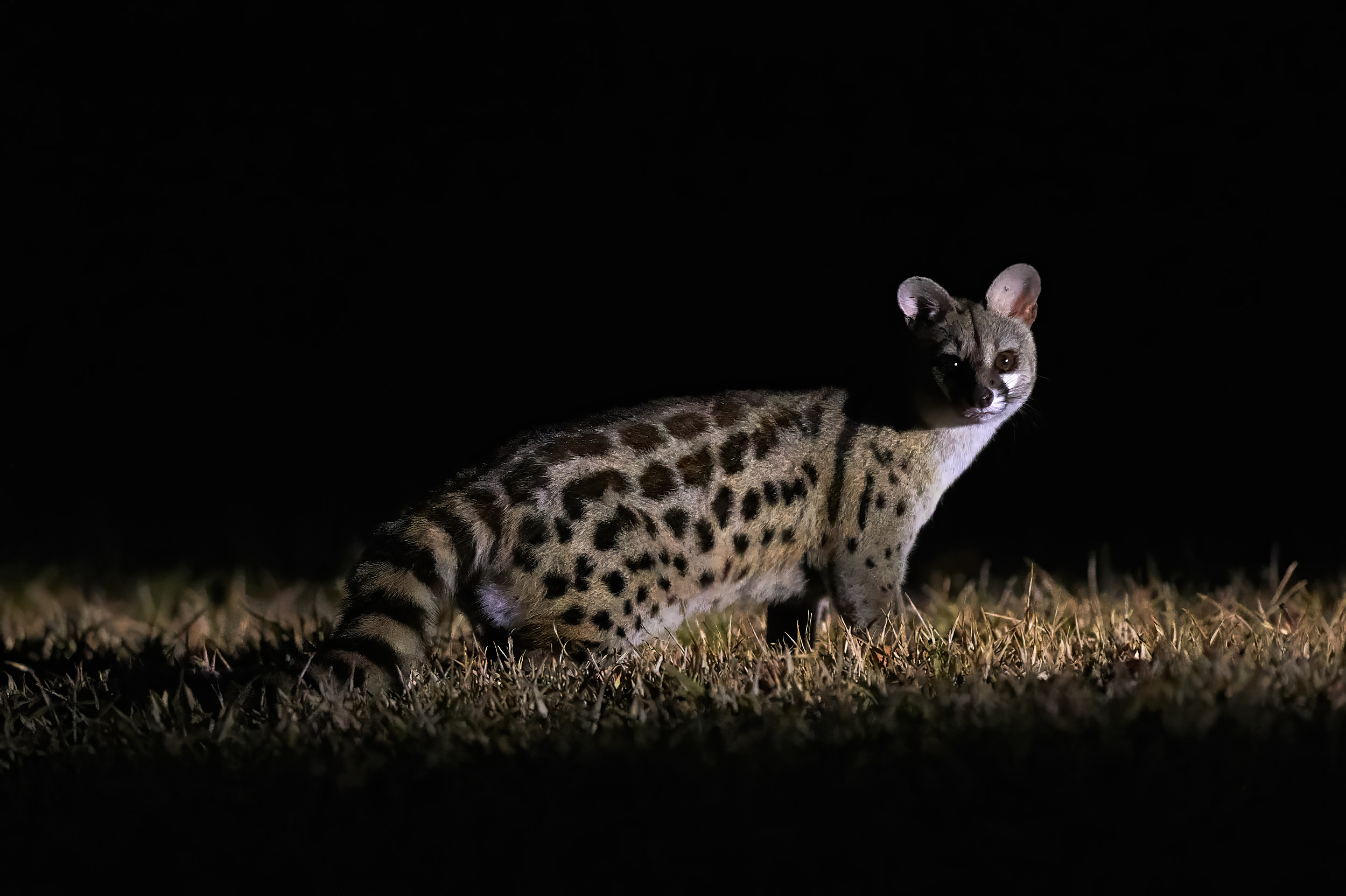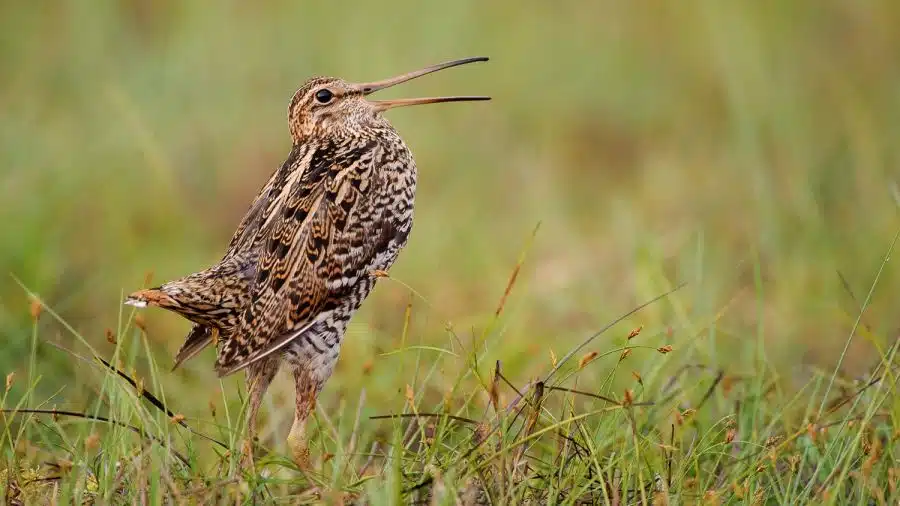The Satpura Tiger Reserve, which was created in 2000 by merging the three adjoining forests of Satpura, Bori and Pachmari, is one of the hidden treasures of India’s wildlife reserves. With an impressive area of 2133 square kilometers, it offers us photographers an incomparable backdrop for breathtaking nature shots.
Although the reserve is home to around 50 tigers, it is characterized in particular by its extraordinary biodiversity. Here we find more than 50 species of mammals, over 300 species of birds and numerous reptiles and butterflies. Photographic highlights include the majestic Indian gaur (Indian bison), one of the most impressive wild bovids, as well as the endangered Indian giant squirrel, which is classified as critically endangered on the IUCN Red List.
For us nature photographers, Madhai Gate is particularly interesting as it is known for its varied topography with plains, valleys, meadows, water bodies and hilly terrain. During the best time to visit between November and February, we can observe and photograph a variety of wildlife in optimal light conditions. However, unlike many tiger-centric parks, Satpura offers a much broader wildlife experience, despite regular tiger sightings.
In this guide, we share our experiences and give practical tips on how we as photographers can get the most out of a visit to Satpura Tiger Reserve. From the ideal times of day for the perfect light to the right equipment, we will cover all the important aspects for a successful photo safari.
- The best safari times for photographers
- Top safari zones in the Satpura Tiger Reserve
- Wildlife photography in Satpura: what photographers can expect
- Practical tips for the photo trip
- Conclusion
- Key Takeaways
The best safari times for photographers
For wildlife photographers, planning the right time for a safari at Satpura Tiger Reserve is crucial. Officially, the park is open to visitors from October 16 to June 30. During this time, we can make the most of the different light conditions and animal activity for our shots.
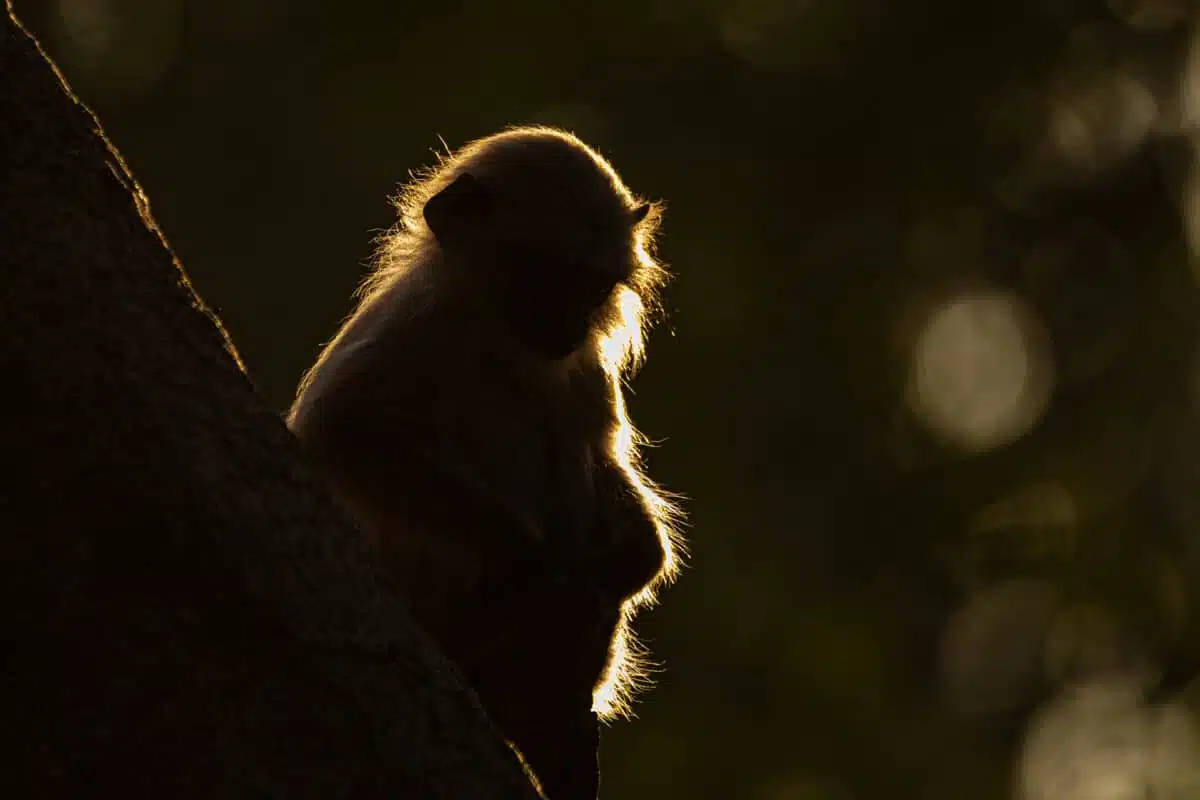
Times of day with optimal light
The golden light early in the morning and late in the afternoon transforms ordinary shots into extraordinary images. At Satpura Tiger Reserve, the safari times vary depending on the season:
- Winter: In the morning from 6:00 to 10:00, in the afternoon from 14:30 to 17:30
- Summer: In the morning from 5:45 to 9:30 a.m., in the afternoon from 3:00 to 6:30 p.m.
The best shots are taken during the so-called “golden hour” shortly after sunrise and before sunset thanks to the soft, warm light. This diffuse light also offers the opportunity to better capture the nuances and details of wild animals.
Seasons for different animal species
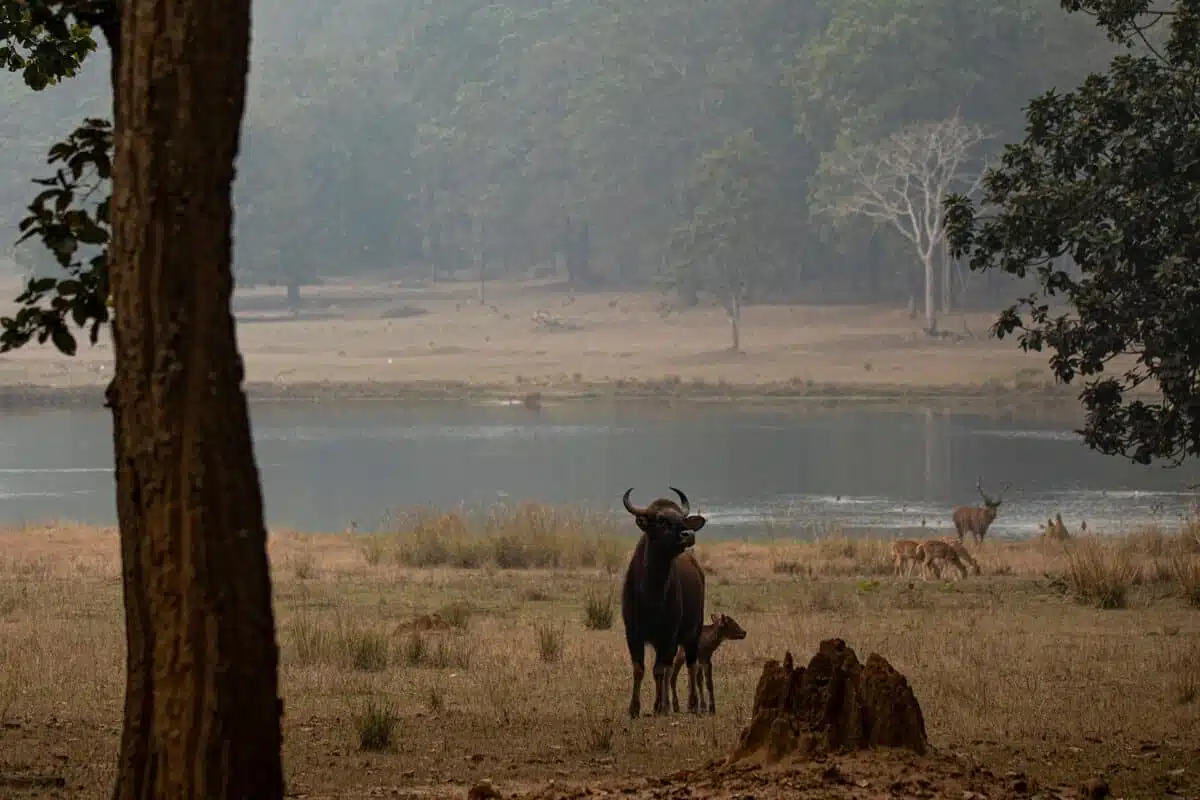
Although the park offers fascinating animal encounters all year round, there are seasonal differences to consider:
- October to March is considered the ideal time with pleasant temperatures between 10°C and 25°C. During these winter months, the animals are more active and the sparse vegetation makes it easier to spot wildlife. Migratory birds also enrich the biodiversity during this time.
- April to June is significantly warmer with temperatures of up to 40°C. However, the animals concentrate at the few waterholes during this time, which increases our chances of special sightings.
In the buffer zones such as Sehra and Parsapani, we can even go on safaris during the monsoon season (July to September), while the core area remains closed.
When tigers are most active
Tigers in Satpura Reserve show a distinct bimodal activity pattern. Their peak activity times are in the morning around 6:00 am and in the evening between 7:00 pm and 8:00 pm. These dates ideally coincide with the best light conditions for photography.
During our daytime excursions, tigers usually rest in dense foliage and hardly move – on average only 120 meters in two hours. At night, their activity increases significantly, with an average of 520 meters of movement in the same period. These findings help us to better plan our photo strategy and maximize the chances of capturing impressive shots.
Top safari zones in the Satpura Tiger Reserve
The Satpura Tiger Reserve is divided into different zones, each offering unique photo opportunities. Each zone has its own special features and is worthwhile for different photographic objectives.
Come out with us!
Do you want to photograph sloth bears, tigers and leopards in the wild – up close and away from the hustle and bustle? In Satpura, you will experience India’s wilderness as it really is: raw, pristine and full of surprises.
Together we explore the park in an off-road vehicle, by boat and on foot – very close to nature, always with a focus on exceptional photo opportunities. I will accompany you with all my experience and help you to capture light, perspective and behavior perfectly.
Whether impressive animal portraits or atmospheric landscape shots – you come home with authentic pictures that tell more than just a moment. And with memories that will last.
Sloth bears & tigers: Satpura – An exclusive photo trip to the heart of India
From March 7-16, 2026, we explore the wild heart of India – Satpura. Sloth bears at dawn, tigers at sunset, leopards in the thicket. An exclusive photo tour through ancient forests, accompanied by experienced guides full of real wild moments.
Madhai Gate: The most popular entry point
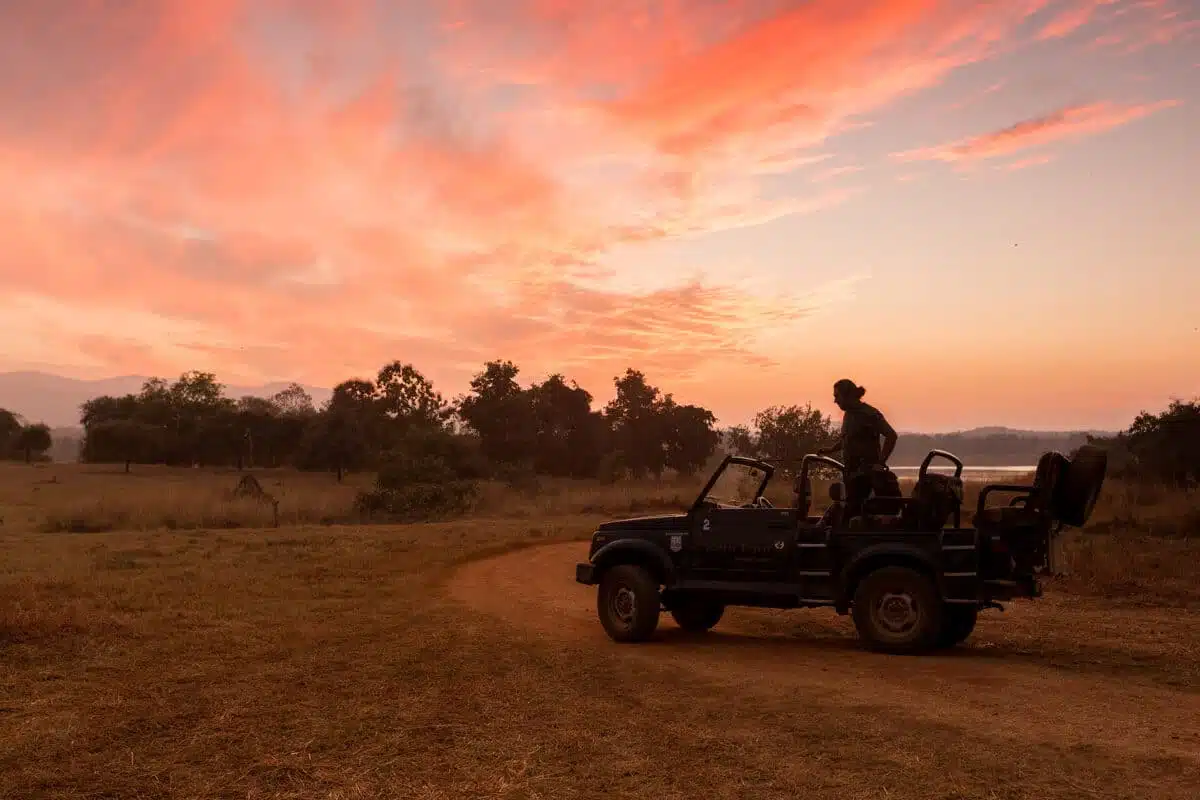
Madhai Gate is the main entry point to Satpura Tiger Reserve and impresses with its varied topography of plains, valleys, meadows, water bodies and hilly terrains. This zone is particularly known for its high tiger density and is therefore the center of wildlife tourism in the park. For reasons of environmental protection, only 30 vehicles are allowed to enter this core zone every day, divided between the morning and afternoon safaris. An additional highlight is the boat safari on the Denwa backwater, which offers further opportunities for wildlife photography.
Churna Zone: High chances of seeing tigers and sloth bears
The Churna Zone, also known as the Bheemkund Safari Gate, is located in the western part of the reserve and is accessible via the Madhai and Bheemkund entrances. As part of the critical tiger habitat, this zone offers relatively higher chances of tiger sightings. Well-known tigers such as the Machali tigress, the Laila tigress and the male tigers R1 and R2 can be photographed here. It is also possible to stay overnight at the Churna Guest House and spend several days in this wildlife-rich zone.
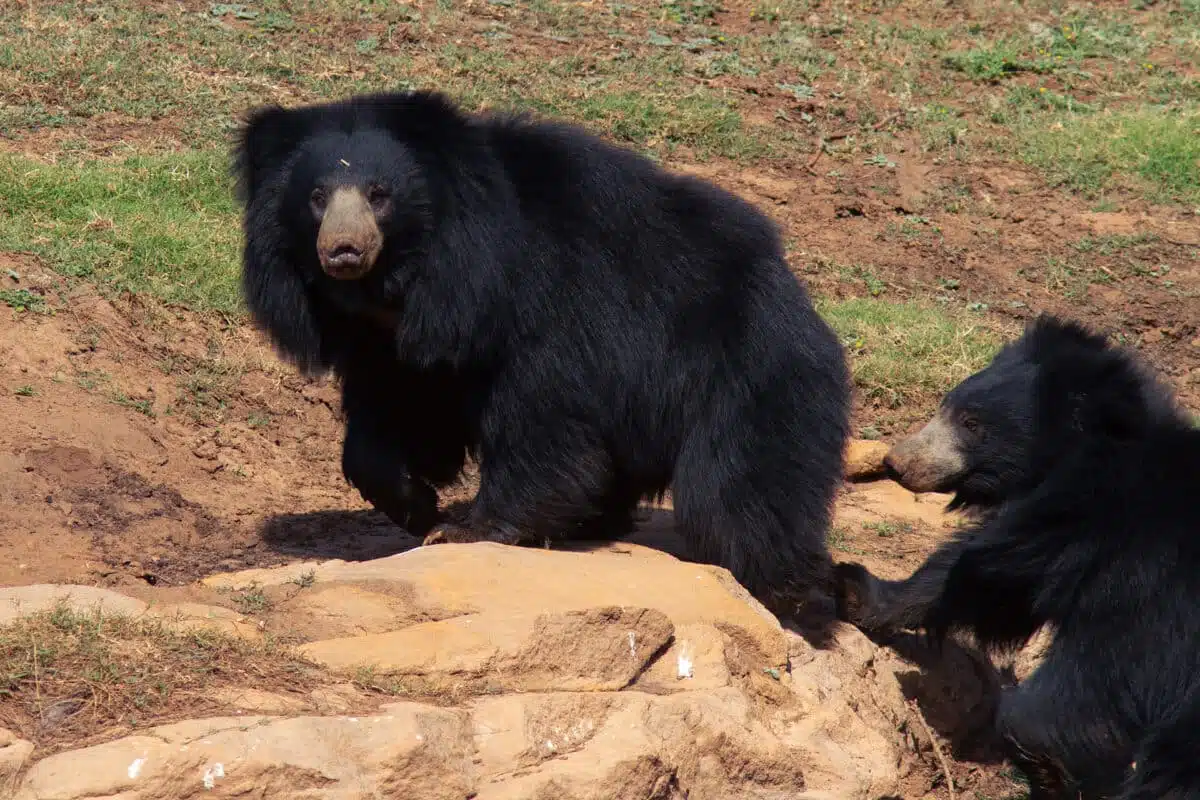
Bori Zone: fewer tourists, more peace and quiet
Bori Wildlife Sanctuary is one of the most exciting upcoming tiger sanctuaries in Madhya Pradesh and is home to sloth bears, leopards, wild dogs, giant squirrels and numerous other Central Indian wildlife species besides tigers. This destination is less explored, away from the usual tourist hotspots and a paradise for nature lovers. The tranquil atmosphere allows us particularly undisturbed photography opportunities.
Pachmarhi Zone: Scenic beauty
The Pachmarhi Zone, also known as the ‘Panaarpani Zone’, is located near the popular Pachmarhi Hill Station. This newer core zone offers a variety of ecotourism activities. Only seven vehicles are permitted daily for the morning safari and another seven for the evening safari. On Wednesday evenings, the zone remains closed for safaris, which serves to promote sustainable tourism. The natural beauty of this zone offers unique scenic views.
Sehra & Parsapani: Ideal for night photography
The Sehra and Parsapani buffer zones are ideal for night patrols, also known as night safaris. The twilight period from 17:30 to 20:00 is ideal for game viewing as many wild animals and birds return to their sleeping or resting places. During this time, predators begin to crawl out of their hiding places and can be photographed as they hunt. These zones offer special opportunities to photograph rare species such as the leopard gecko, rusty spotted cat, mouse deer and Indian porcupine.
Wildlife photography in Satpura: what photographers can expect
The Satpura Tiger Reserve surprises with an impressive diversity of species that goes far beyond the tigers that give it its name. As photographers, we find a unique mix of big cats, rare mammals and fascinating birdlife.
How many tigers live in Satpura?
The tiger population in Satpura has recovered significantly in recent years. While the reserve used to be home to fewer than 40 tigers, intensive conservation measures have led to a welcome increase. Current estimates put the number of tigers at around 80. With the help of camera traps, 61 clearly identifiable individuals have been detected, whereby each tiger can be recognized by its unique stripe pattern – comparable to human fingerprints. Nevertheless, tiger encounters remain rare due to the vast territory and dense forest.
Sloth bears, wild dogs and other rare species
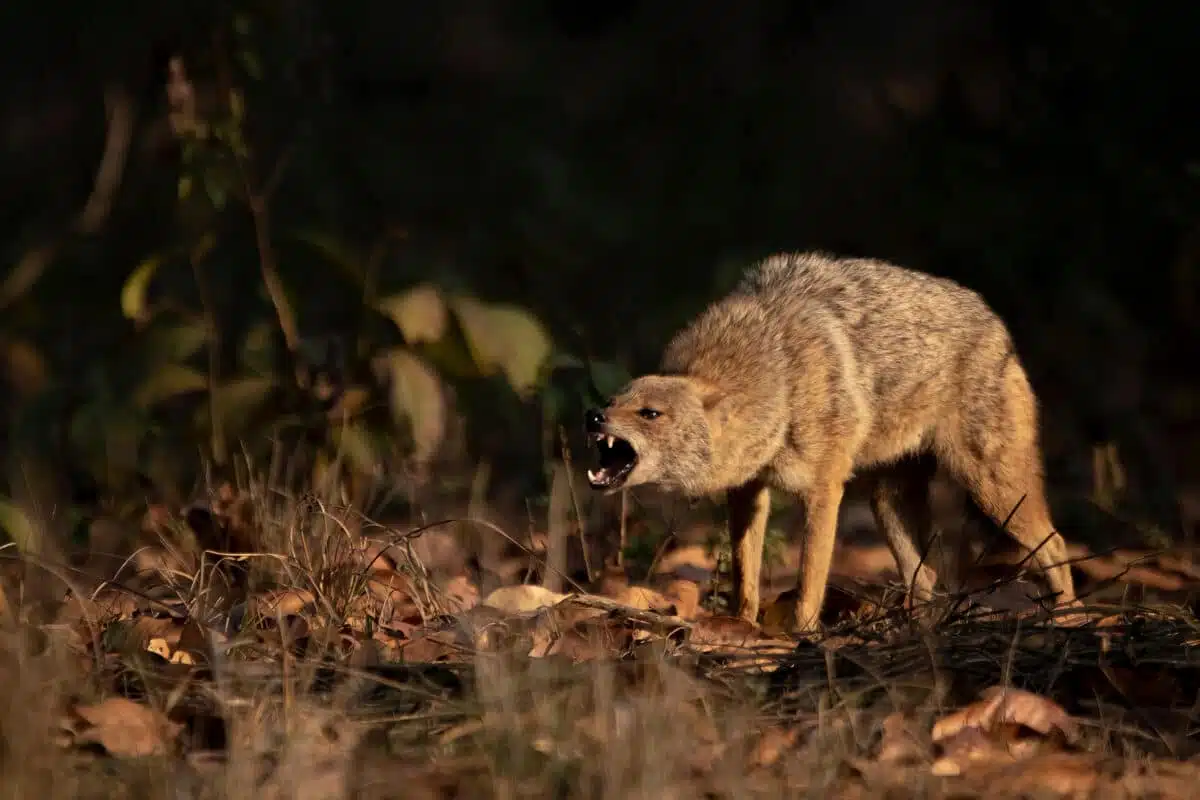
What makes Satpura special: The chances of spotting sloth bears, leopards and wild dogs (dholes) are exceptionally good here. The reserve is also home to the Indian bison (gaur), blackbuck antelopes, four-horned antelopes and the rare Indian giant squirrel. In total, the reserve provides a habitat for 52 mammal species and 31 reptile species. Of particular interest is the reintroduction of the endangered Barasingha deer, whose population has doubled from 114 to over 240 animals within a decade.
Birds and smaller animals for close-ups
With over 300 documented bird species, Satpura is a paradise for bird photography. During boat safaris on the Denwa River, we are particularly good at photographing water birds. Photographic highlights include the Malabar hornbill, the Malabar whistling bird, the crested eagle, the short-toed snake eagle and the paradise flycatcher – the state bird of Madhya Pradesh. Smaller mammals such as the tricolored palm squirrel or the lesser mongoose are also suitable for close-ups.
Understanding animal behavior for better pictures
Understanding animal behavior is crucial for successful wildlife photography. By taking the time to observe the animals, we can better predict their movements and capture the perfect moment. Patience pays off, especially with shy animals such as tigers and leopards. We should photograph in muted colors that blend in with the surroundings and avoid abrupt movements. The right timing – especially in the early morning and late afternoon, when many animals are active – increases our chances of getting exceptional shots.
Practical tips for the photo trip
A successful photo trip to Satpura Tiger Reserve starts with the right preparation. Here we share important practical tips that will maximize our photographic yield.
Which camera equipment is ideal?
For optimum results, we need at least two camera bodies to enable quick switching between different focal lengths without changing lenses. Ideally we combine:
- One full-frame and one crop sensor housing
- A 16-35mm lens for landscape shots
- A versatile 70-200mm for medium distances
- A telephoto zoom with a focal length of 100-400mm or 150-600mm
- For long distances a 500mm or 600mm lens
In addition, we should bring bean bags as a stand substitute, as these are easier to use in the safari vehicles. Dust and rain protection are essential due to the weather conditions.
Recommended accommodation for photographers (e.g. Reni Pani)
Reni Pani Jungle Lodge is a wildlife-focused accommodation offering ideal conditions for photographers. Just 11 km from the reserve, it offers comfortable accommodation with a swimming pool, massage facilities and a library. Particularly valuable for us photographers: the nature guides at the lodge have extensive knowledge of local species and their behavior.
Rules of conduct in the park
At Satpura Tiger Reserve we have to follow a few important rules:
First of all, we are only allowed to enter the reserve when accompanied by an official nature guide. In addition, leaving the vehicles during the safari is strictly forbidden. We should also wear muted colors that harmonize with the natural environment – khaki, olive green or other inconspicuous colors. Finally, the use of flash photography is prohibited in the park.
Safety and respect for nature
For a safe and respectful photo trip, we should always keep a sufficient distance from the animals and avoid abrupt movements. It is equally important not to feed or disturb the animals. Above all, we must follow the instructions of the guides, whose experience enables them to better assess the animals’ movements.
Conclusion
The Satpura Tiger Reserve undoubtedly offers us photographers an extraordinary experience away from the crowded tourist trails. Unlike the better-known tiger reserves in India, Satpura impresses above all with its incredible biodiversity and breathtaking landscapes. In fact, we can not only photograph tigers here, but also rare species such as sloth bears, wild dogs and the endangered Indian giant squirrel.
The right planning is particularly important for our photographic yield. The period between October and March offers the most pleasant temperatures and the best viewing opportunities. We should also plan our safaris during the golden hours in the early morning and late afternoon, when the warm light makes for magical shots.
Although each zone of the reserve has its own special features, a visit to the Madhai and Churna zones is particularly worthwhile for big game photography. However, if you want to photograph in peace and quiet, you will find ideal conditions in the less frequented Bori zone. Regardless of our destination in the park, patience pays off. The longer we observe, the better we understand the animals’ behavior and can capture the perfect moment.
Finally, we should not forget that as photographers we also have a responsibility. While we take home unforgettable memories in the form of pictures, we must always respect the rules of the park and keep sufficient distance from the animals.
The Satpura Tiger Reserve is far more than just another tiger reserve – it is a photographic paradise that captivates us with its diversity, tranquillity and beauty and enables us to create unique images of the Indian wilderness.
Key Takeaways
These key insights will help you plan your photo safari in Satpura Tiger Reserve and take unforgettable wildlife photos:
– Use the best photo times: Plan safaris between October and March during the golden hours (early morning 6:00am and evening 5:30pm-6:30pm) for optimal light.
– Diversity beyond tigers: Satpura offers 300+ bird species, rare sloth bears, wild dogs and the endangered Indian giant squirrel – perfect for diverse portfolios.
– Choose the right equipment: Bring at least two camera bodies, telephoto lenses (100-600mm), bean bags for tripods and dust/rain protection.
– Strategic zone selection: Madhai Gate for tiger sightings, Churna for sloth bears, Bori for undisturbed photography and Sehra/Parsapani for unique night shots.
– Show patience and respect: Understand animal behavior through observation, keep your distance, do not use flash and follow the guides’ instructions.
With the right preparation and respect for nature, Satpura becomes a photographic paradise that offers far more than the crowded mainstream tiger reserves of India.


